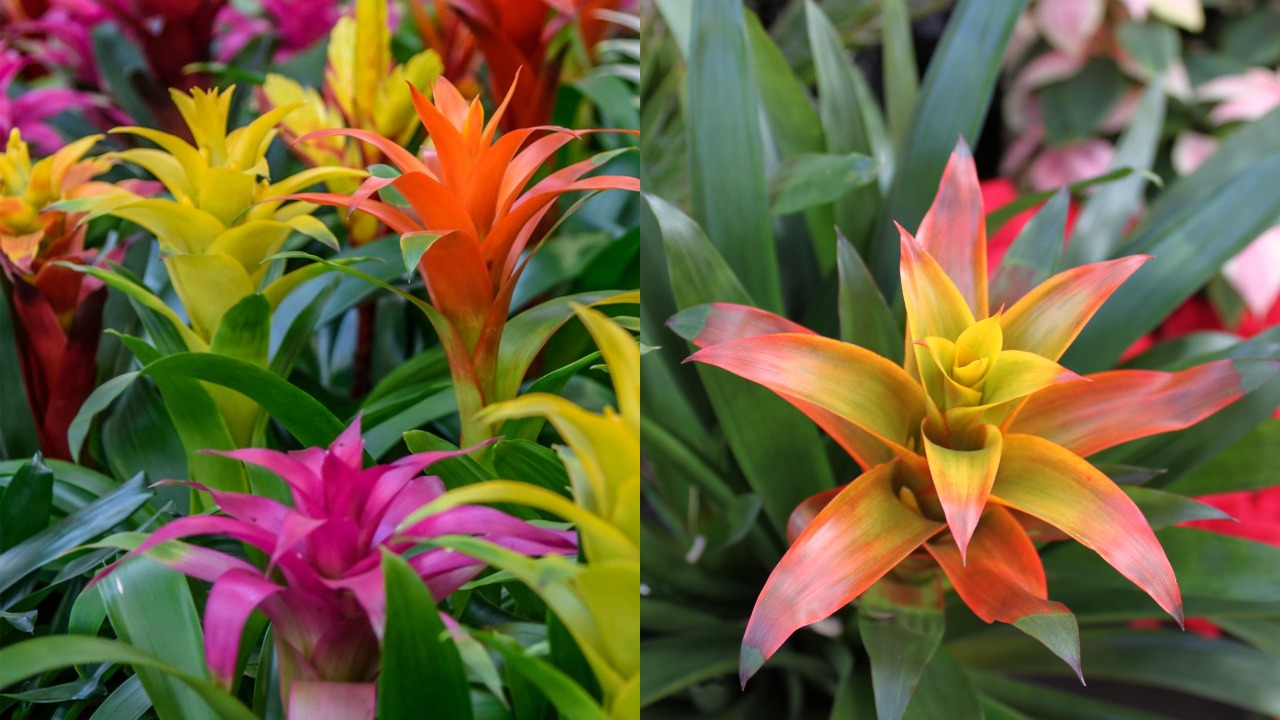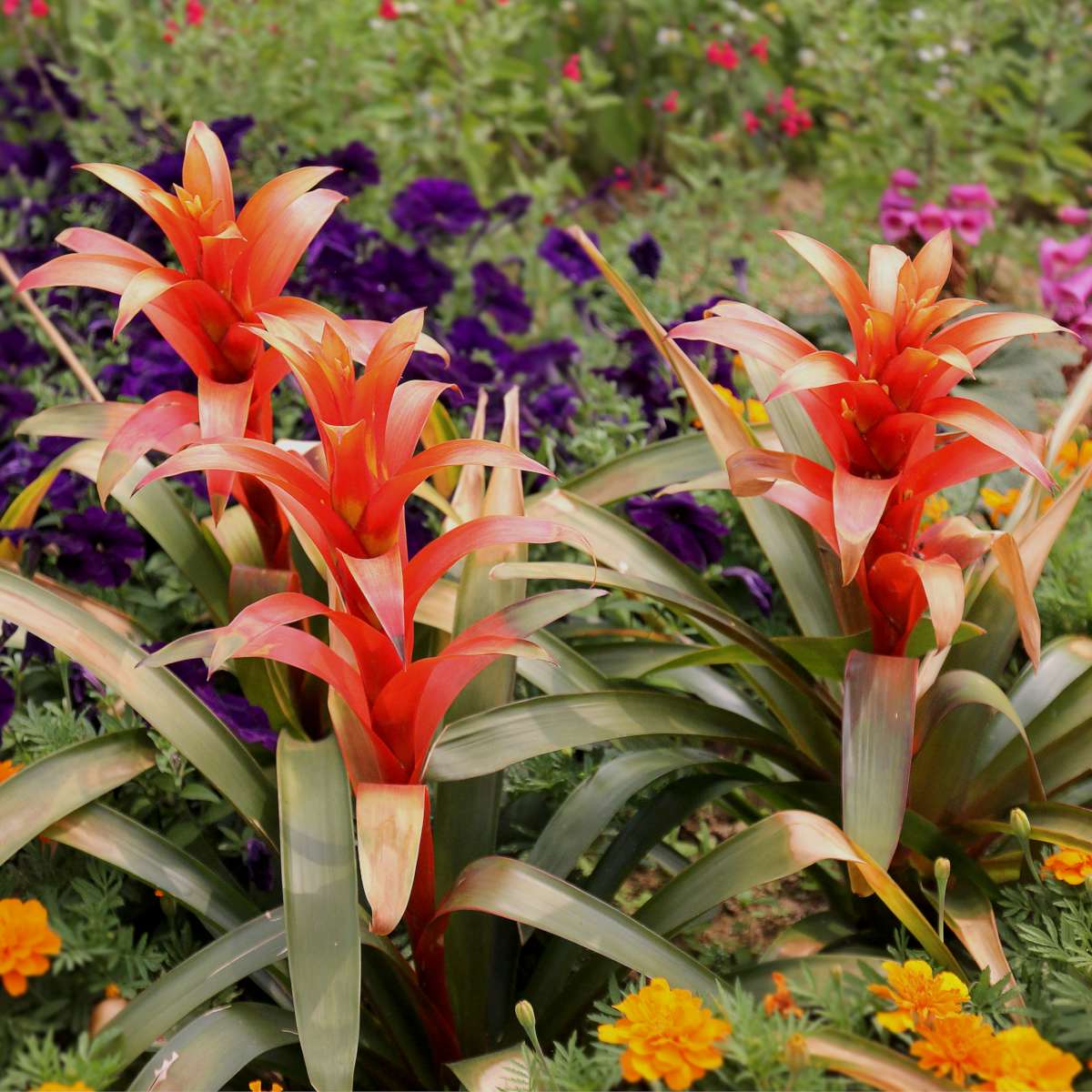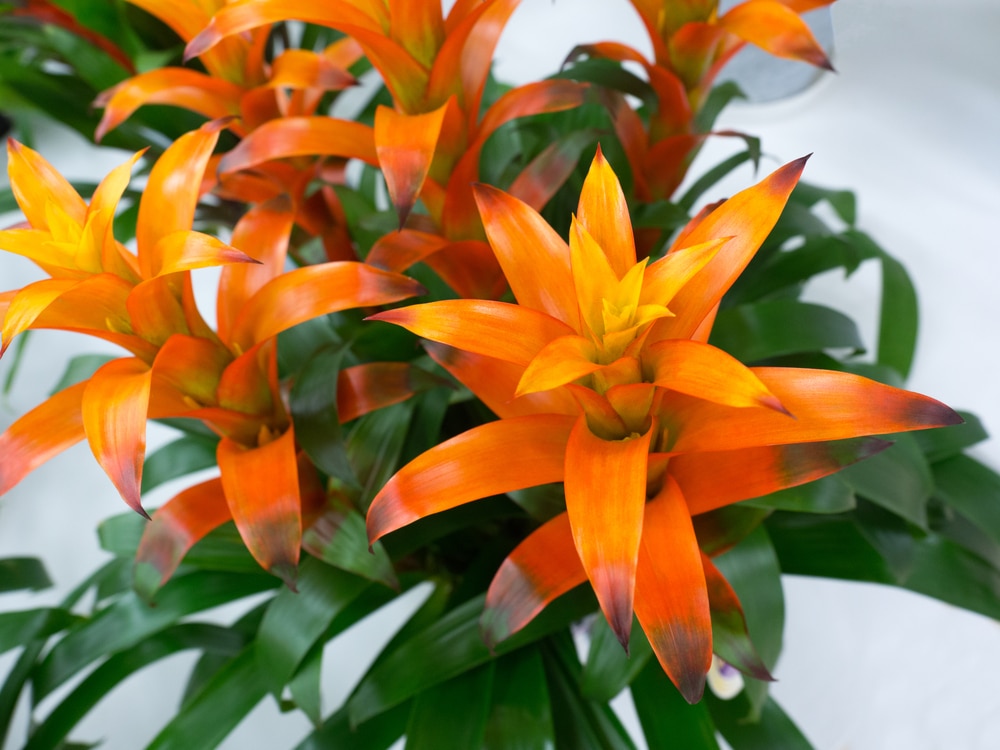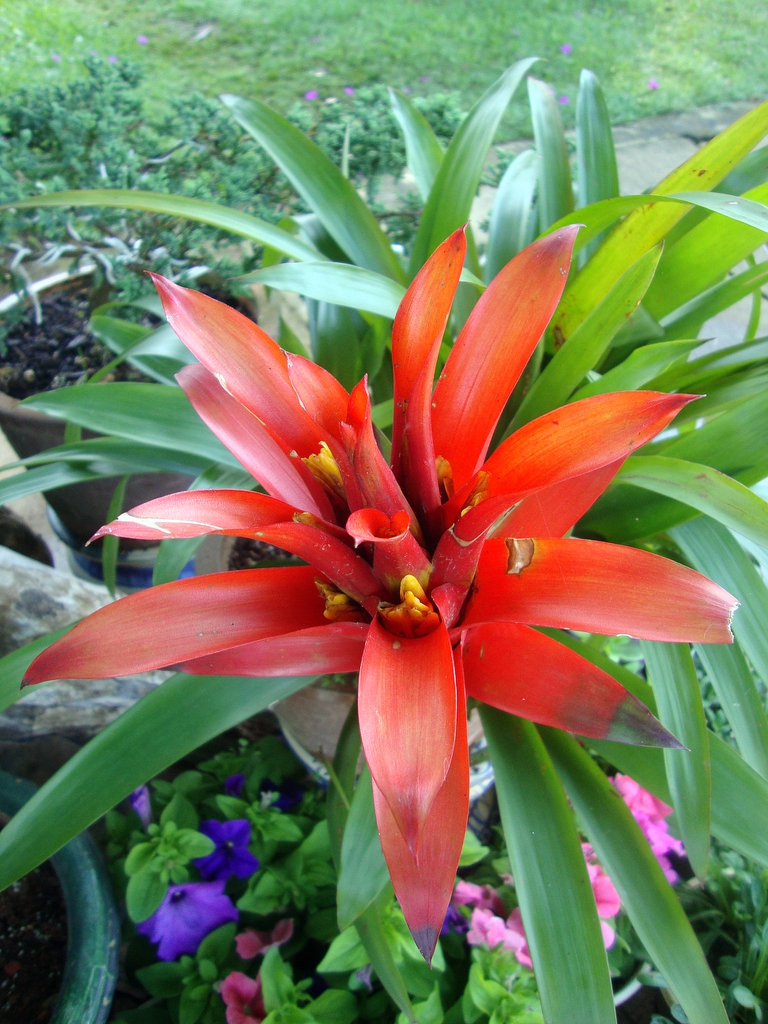
Inhabiting the tropical rainforests of Central and South America, the guzmania flower prefers to settle in trees. Bright green rosettes of leaves feed on their juices, decorating the trunks with red sultans of inflorescences. For such a delightful appearance, the plant has become one of the most popular species of exotic flora used in the interiors of homes and offices.
The variety of the guzmania plant is also striking, with about 130 different species, differing in color and shape of the flower. It is impossible to deny her captivating charm.
Being part of the bromeliad family, guzmania belongs to epiphytes, but it also takes root in the soil. The latter circumstance allowed tropical exotic plants to inhabit home flower beds in other climatic zones successfully.
Guzmania minor is the most common type. The plant blooms for a long time, please its owners with shiny emerald leaves and the brightest bracts. Its variety also includes Guzmania minor rondo, compact, with small flowers surrounded by red bracts.
Some types of guzmania plants are valued by flower growers and interior designers for the leaves’ decorativeness. They form huge rosettes, colored green or pink, with transverse and longitudinal stripes.
How to Care

The use of guzmania outdoors is problematic. She loves humid air and cannot stand direct sunlight. Also, it blooms in the spring and early summer. It isn’t easy to provide such conditions in our garden, but if you have the opportunity to maintain a winter garden, then the flower will take root in it, delighting you with a long flowering.
To get a healthy and willingly blooming guzmania, home care should be built according to certain rules.
- Temperature
In summer, room temperature for guzmania needs a temperature of + 20-25 degrees, and in winter it feels comfortable even at +17. Still, when the temperature drops for a long time, it can get sick or refuse to bloom.
- Humidity
Moisture is one of the most important indicators necessary for the proper development and growth of a plant. Guzmania loves humid air, so you will need to install an indoor fountain next to the flower or keep the plant in a pan constantly filled with water. Loves tropical beauty and spraying. In hot summer, a “shower” is useful for her, held 2 times a day, but in general, the flower must be sprayed once a day.
- Watering
There are some peculiarities here. The soil under the plant is not watered, water is poured directly into the leaf outlet. After a few minutes, any remaining water in the outlet is removed. The soil is moistened if it is too dry.
According to the seasons, the scheme is as follows: in the summer – water every day, in the winter – water 1-2 times a week.
- Lighting
For correct illumination, plants choose western or eastern windows, creating diffused partial shade for it. Direct sunlight causes leaf burns.
Please note that on the windowsill with the heating device placed under it, the guzmania will most likely die, because the battery takes the moisture necessary for the plant from the air.
- Top Dressing
The plant should be fed from March to September, during its flowering period. Special nutrient mixtures are not required; it is enough to apply fertilizers for bromeliads to the soil at intervals of 2-4 weeks. For the correct feeding regimen, write down to yourself when you made the first batch and continue feeding the flower at regular intervals.
Knowing how to care for guzmania, you can easily master the issues related to plant reproduction.
Transplant and Reproduction

You bought a flower, brought it home. What’s next? You have to transplant guzmania from a storage container to a home one. Prepare a new plant pot in advance.
It should be small and shallow because the guzmania root system is poorly developed. Pour a mixture of peat, sand, turf, and sphagnum (moss) into the pot, taking equal parts. To avoid puzzling over how to make this mixture, buy ready-made bromeliad potting soil from the store.
Obviously, having achieved success with the first purchased guzmania, many will want to increase the number of beautiful flowers in their homes. There are no serious difficulties in the reproduction of guzmania. Remember, she is an epiphyte, and to reproduce her own kind, she chose a rather simple way: “dying”, to give birth to children. How does this happen?
When the plant fades, alas, it dies. However, before the parent flower dries up, it has time to form the baby. It appears at the base of the Guzmania and grows very quickly. By the time the “mother” has completely died, the “child” can grow up to 15 cm. The resulting children of the Guzmania will become your material for its reproduction.
How is the transplantation of Guzmania children? Having found the baby, carefully dig it up and make sure that roots have formed on the young plant, without them the baby cannot be separated. Then take a sharp knife and carefully separate the baby from the parent flower. For planting, prepare a small pot, pour drainage, fill the pot with soil and plant the baby in it. And continue caring for her as described above.
Diseases and Treatment

Quite resistant to diseases, guzmania can be attacked by pests such as spider mites, scale insects, or aphids. It is not difficult to notice them, they do not hide and immediately make themselves felt.
Aphids are noted on the plant with transparent secretions and gray dots on the leaves, the scabbard leaves brown spots, and the spider mite “decorates” the rosette base with cobwebs. To combat them, use a soapy solution, with which you thoroughly wash the entire plant. If the disease is advanced, apply insecticides.
Another attack is the fungus, which appears as gray spots on the leaves. A fungicide is used to destroy it.
It is dangerous for guzmania and waterlogging, which leads to decay of the roots. Follow the rules for watering the flower.
With proper care, one of the most beautiful representatives of the bromeliad family will not leave your garden without its beautiful “sultans”.






